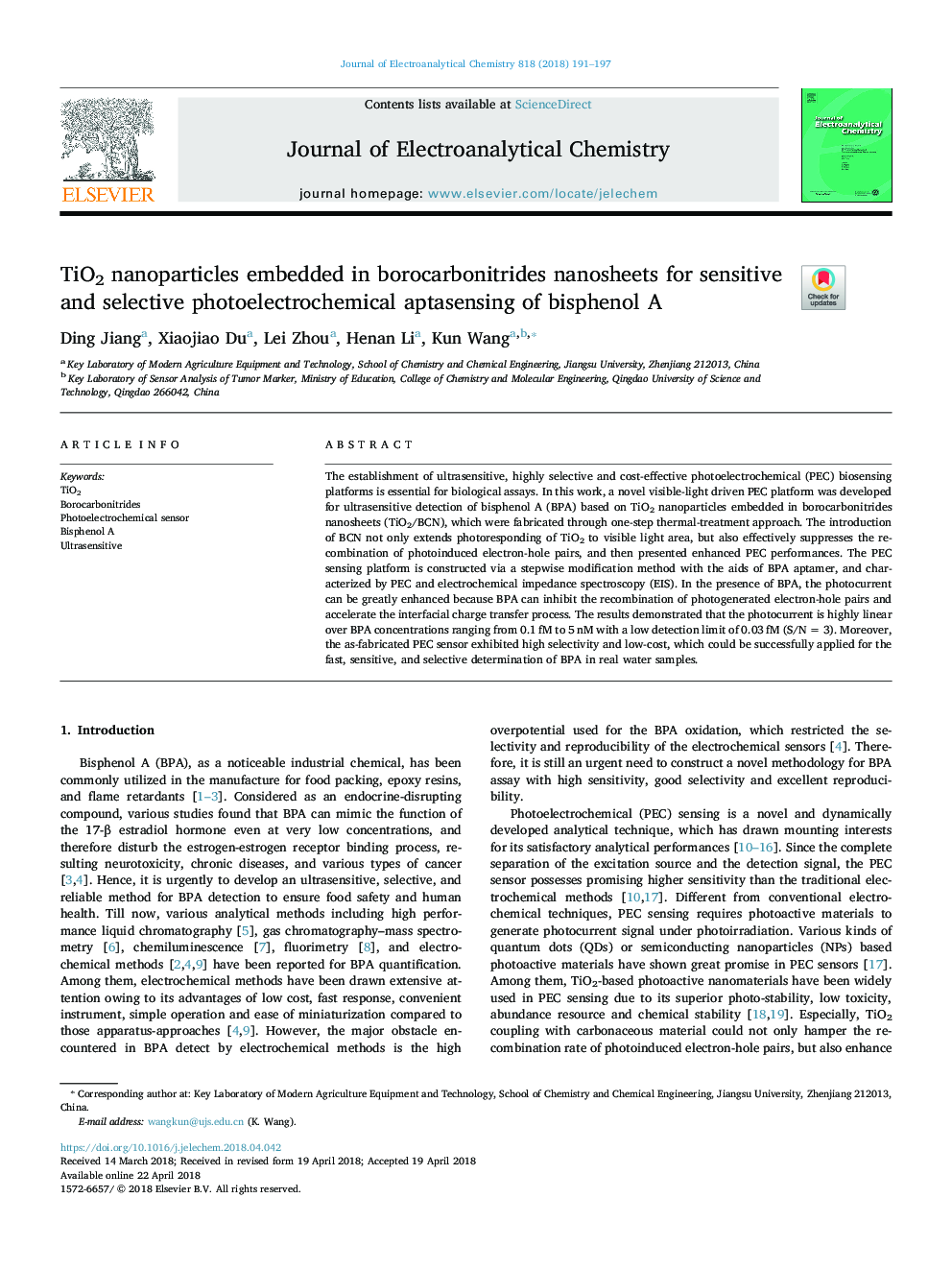| Article ID | Journal | Published Year | Pages | File Type |
|---|---|---|---|---|
| 6661779 | Journal of Electroanalytical Chemistry | 2018 | 7 Pages |
Abstract
The establishment of ultrasensitive, highly selective and cost-effective photoelectrochemical (PEC) biosensing platforms is essential for biological assays. In this work, a novel visible-light driven PEC platform was developed for ultrasensitive detection of bisphenol A (BPA) based on TiO2 nanoparticles embedded in borocarbonitrides nanosheets (TiO2/BCN), which were fabricated through one-step thermal-treatment approach. The introduction of BCN not only extends photoresponding of TiO2 to visible light area, but also effectively suppresses the recombination of photoinduced electron-hole pairs, and then presented enhanced PEC performances. The PEC sensing platform is constructed via a stepwise modification method with the aids of BPA aptamer, and characterized by PEC and electrochemical impedance spectroscopy (EIS). In the presence of BPA, the photocurrent can be greatly enhanced because BPA can inhibit the recombination of photogenerated electron-hole pairs and accelerate the interfacial charge transfer process. The results demonstrated that the photocurrent is highly linear over BPA concentrations ranging from 0.1â¯fM to 5â¯nM with a low detection limit of 0.03â¯fM (S/Nâ¯=â¯3). Moreover, the as-fabricated PEC sensor exhibited high selectivity and low-cost, which could be successfully applied for the fast, sensitive, and selective determination of BPA in real water samples.
Related Topics
Physical Sciences and Engineering
Chemical Engineering
Chemical Engineering (General)
Authors
Ding Jiang, Xiaojiao Du, Lei Zhou, Henan Li, Kun Wang,
